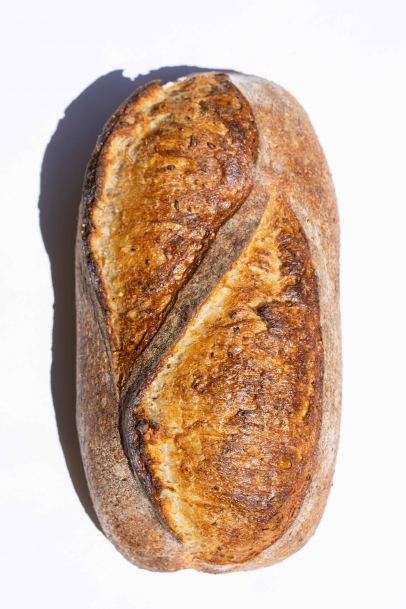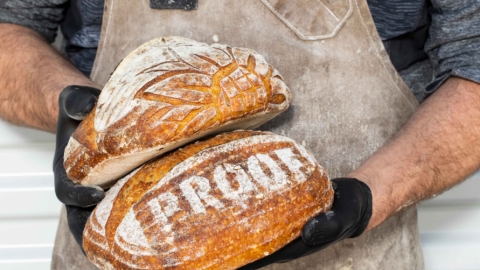An Ode to Crusty Bread
As a child, I remember being mystified when some of my friends’ mothers cut the crust off their bologna sandwiches. In our house, the crust was considered the best part of the slice, whether it was from our usual, everyday, brightly plastic-wrapped Gardner’s White Bread or from the special loaves that Mom sometimes made by hand. The heel of the loaf with its high crust/crumb ratio was especially prized and reserved for Dad’s nighttime peanut butter sandwich snacks.
It’s no wonder that as my friends (and other American children of that generation) grew up and graduated from squishy white bread to more interesting loaves, their anti-crust bias came along with them. Some artisan bakers, like Jason Raducha from Noble Bread, have met the challenge by customizing their bread to meet these ingrained tastes.
I caught up with Raducha recently at Beckett’s Table to sample his breads and see how the character of different flours influenced the taste of the finished loaf. But as we were talking he noted how some of the loaves had a much darker crust than others. Some of his customers appreciate the darker, crustier loaves, with their toasty flavors; others look for a softer mouthfeel and a more accessible loaf.
For me, I vote for crust. There’s just something primal about tearing into a firm loaf of bread that makes you work a little before revealing its soft, airy insides that gives you a special appreciation for the baker’s art. (And I do mean “tear into”; slicing vs. tearing is a whole other discussion).






